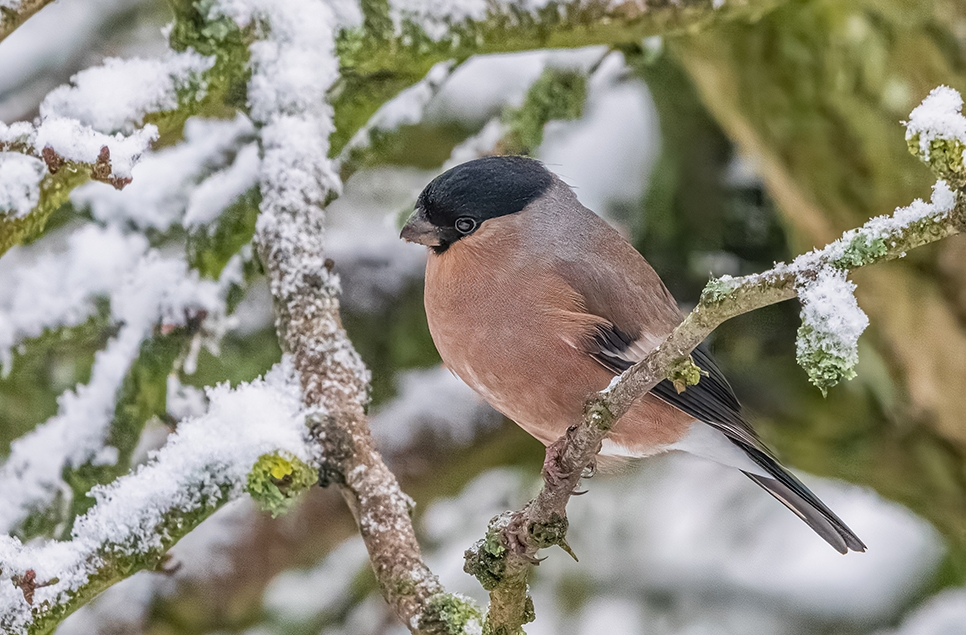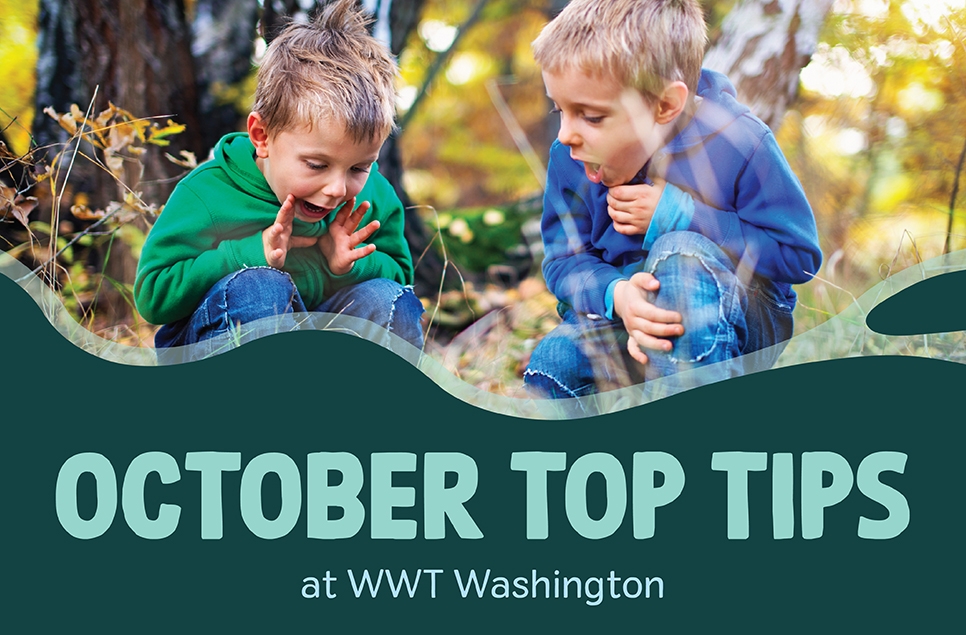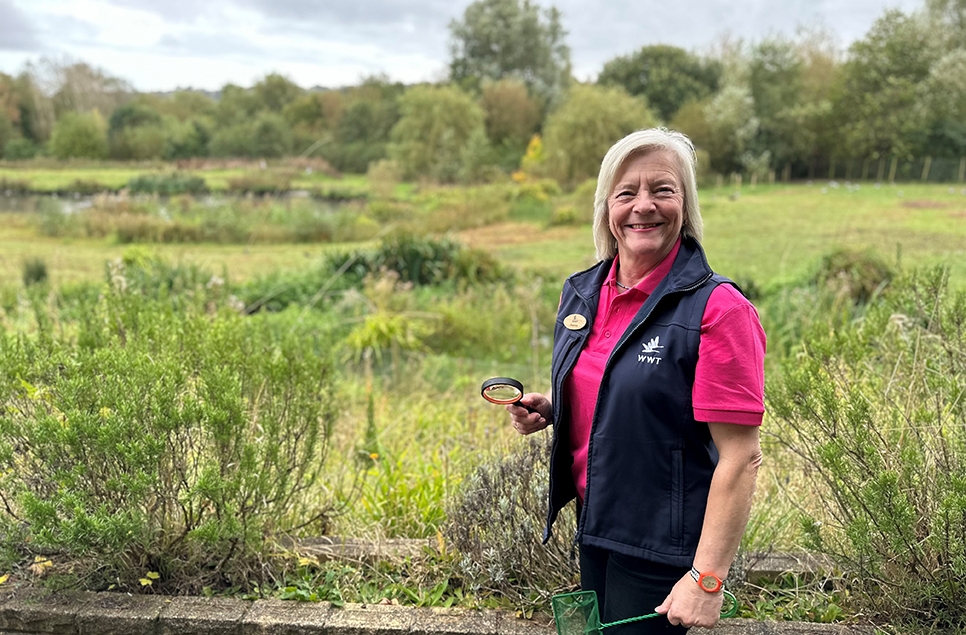Winter photography hints and tips at Washington Wetland Centre
Compared to other seasons, the winter months bring an entirely different set of opportunities and challenges for the visiting photographer. Find out more from our volunteer photographer Ian Henderson.
"Meteorological winter starts on the first day of December and by then, daylight hours and light quality have changed significantly enough to have an impact on photography.
One thing for sure, is that life on the reserve here at Washington Wetland Centre adapts to the seasons irrespective of the date, and you will need to adapt your camera settings to embrace this.
Apart from subject material, light plays an enormous part in achieving good photographs. Opening times in the winter months provide the additional opportunity for golden hour and blue hour photography within the reserve. And whilst not exactly holding dark sky status, there are some great opportunities to shoot the moon and the odd early evening planet!
For photographers, more than any other group of visitors to the reserve, adaptability and weather watching are probably the most important areas on which to focus. The reserve has much to offer at this time of year as the weather ranges from dreary, overcast and just plain miserable, to misty and ethereal, and then clear, beautifully lit sunny days. Whatever the weather though, there is always the opportunity for interesting shots if you are creative and observant.
Finding your light
At this time of year, the golden hour starts mid-afternoon, followed by sunset, and then the 'blue hour' in the last half hour before the centre closes.
As light levels tend to be lower at this time of day, keep your ISO levels in mind and slightly overexpose to retain detail. You may need to select a high ISO setting to achieve a balanced exposure. My preference is to set ISO to auto and select aperture and shutter speed manually according to the subject. As well as Adobe Lightroom and Adobe Photoshop, there are now quite a few editing applications that make a very good job of removing noise from high ISO images.
There are a whole variety of woodland birds, waders, water birds and mammals to see from the hides and other vantage points during winter.
Highlights so far this season include bearded tits, grey partridge, little egrets (pictured below) and water rail around the Saline Lagoon. Wild Eurasian otters and a grey seal have also been observed fishing on the river from Lagoon View hide and Window on the Wear. Whooper swans have been spotted overhead and roe deer have been seen regularly in the outer reserve around Spring Gill and the amphibian ponds.
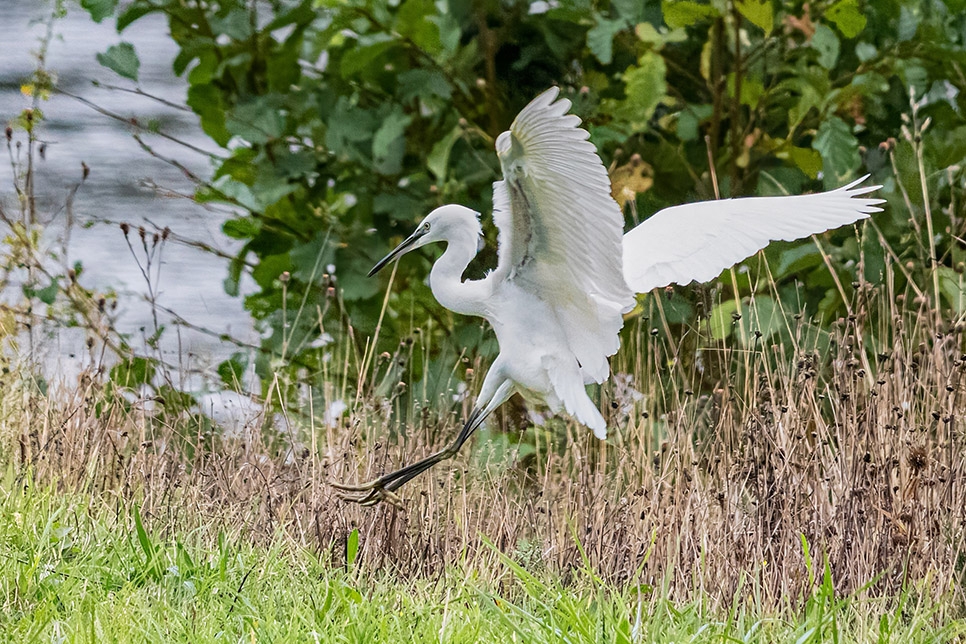
In recent years, jackdaws in their thousands have gathered every evening on the power pylons to the west of the reserve. Their murmurations, when they take to the wing collectively, are quite a sight to see (and hear!).
Curlew usually arrive at Wader Lake for their overnight roost as the light begins to fade, along with other species, including redshank, and most recently, goosander. Although the light levels at this time of day may may rule out bright images, I have managed to take some nice silhouettes. This is also a great time to rest the camera and take time to listen to the twilight sounds of nature including the delicate and eerie calls of curlew, tawny owl and much more.
Top wildlife spots
Make a point of asking at the admissions desk for the latest sightings when you arrive at the centre. There may just be something out of the ordinary on the list!
Close Encounters and Ganderland - Our collection birds have mostly recovered their breeding plumage, displaying their finest in anticipation of the breeding season next spring and making for some special close-up images. Snowy weather makes for fantastic photography, these emperor geese look particularly spectacular on a snowy backdrop!
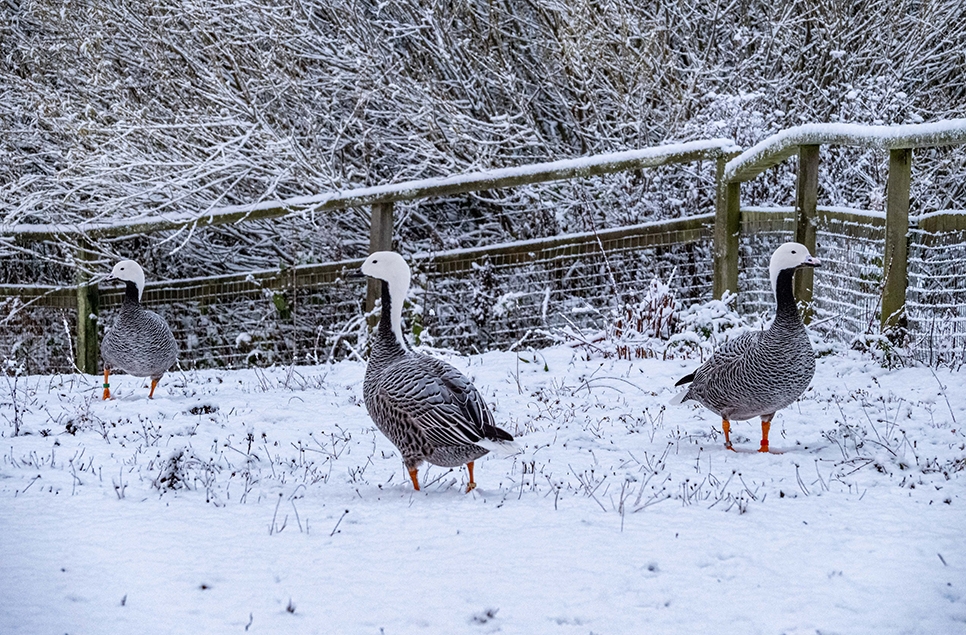
Reedbed and the reservoir - Waterfowl and dramatic views across the river to Penshaw Monument. This is a great spot for golden and blue hour and sunset landscapes. A great opportunity for photographs of flying silhouettes against a clear twilight sky.
Hollowood - Woodland birds, insects and some dramatic fungi. Lingering patches of colour before the last of this year's leaves finally succumb to winter. Watch or listen out for treecreeper, wren, blackbird, robin, collared dove and wood pigeon.
Hawthorn Wood and The Lookout - All manner of woodland birds, including bullfinch (pictured below), treecreeper, nuthatch, great-spotted woodpecker, stock dove, sparrowhawk, jay, wren, blackbird, robin and red-listed willow tit. Both of these areas offer well-stocked feeding stations as well as natural branch and wooden perches, so photographers can get a good mix of images depending on preferences.
Lagoon View hide - A good variety of waders and duck species to see. Water rail (pictured below), kingfisher, little egret, kestrel, heron, curlew, Eurasian teal, redshank and various sandpipers. We have also had sightings of bearded tits, roe deer, Eurasian otter and fox from this hide! Spotted redshank are also around on occasion. The Lagoon View hide is a great place to spend a patient hour!
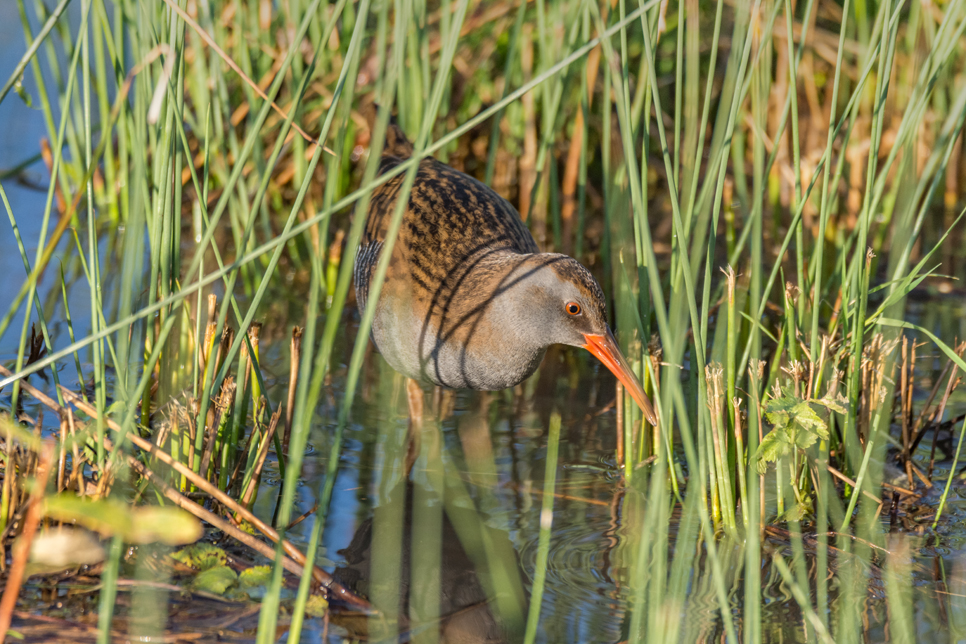
Wader Lake - Curlew, lapwing, snipe, jack snipe, shelduck, shoveler, teal, pink-footed geese, kestrel, sparrowhawk, stock dove plus many more regular and sometimes very rare visitors. If you’re lucky you may spot whooper swans, little egret, spoonbill, kingfisher, goosander, perhaps even a marauding peregrine falcon. You may even befriend a mute swan - a fantastic opportunity for some macro photography with a difference, as seen below of the mute swan's basal knob!
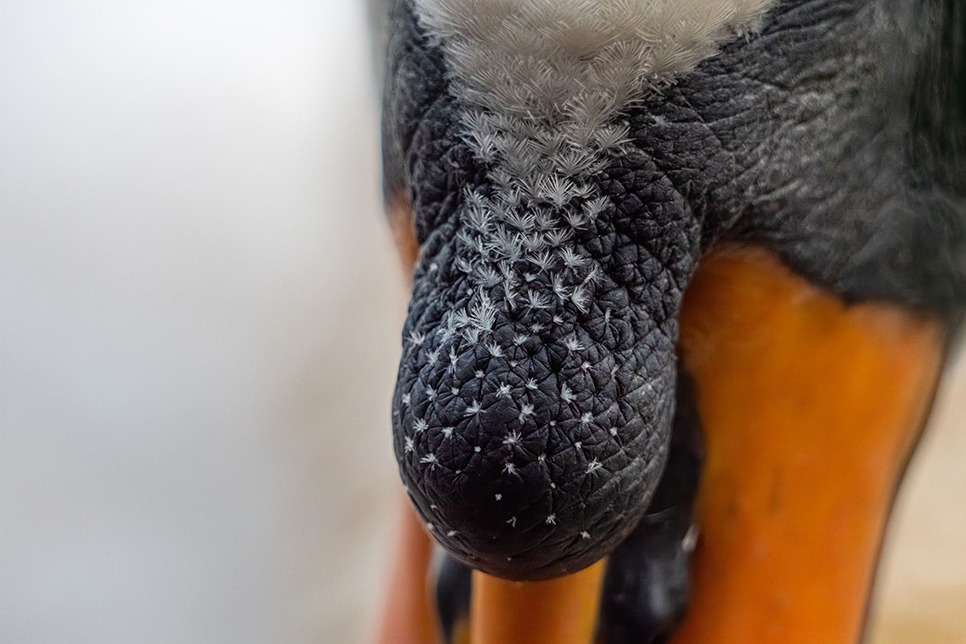
Wader Lake footpath - This area offers a wildlife corridor for all manner of wildlife. The River Wear is visible with multiple viewpoints (the river viewpoint and Window on the Wear). Expect a wide variety of birds on the river such as goosander, little grebe, oystercatcher, redshank, curlew, cormorant and buzzard overhead. The hedge lines and trees along the footpath provide cover for small birds such as siskin, long-tailed tit and goldfinch, while winter thrushes such as redwing, fieldfare and mistle thrush can be seen and heard.
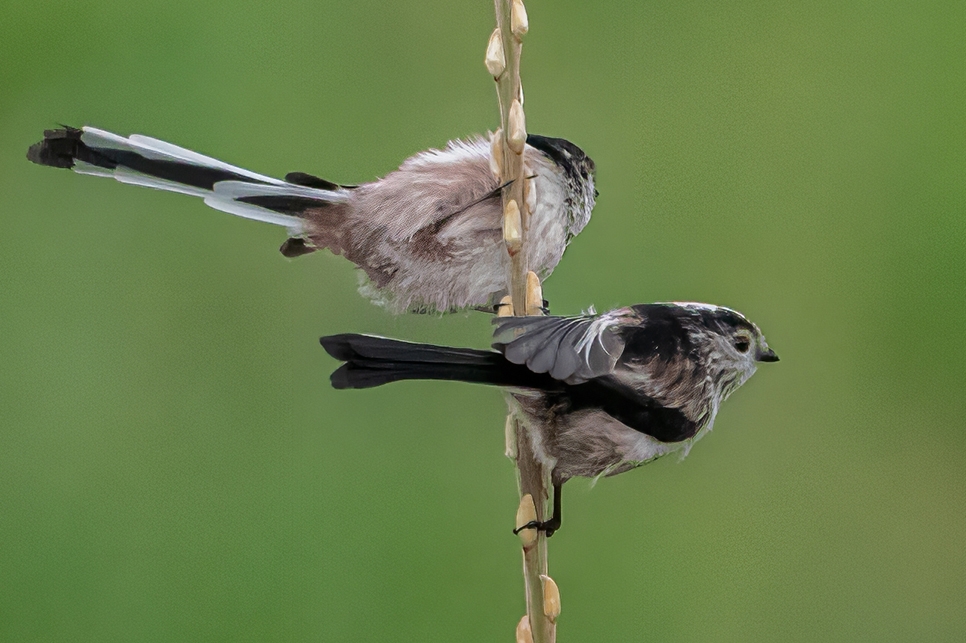
Once we move into late January, we'll see the return of grey heron as they set about building and repairing their nests on the 'heron hedge' at the back of Wader Lake for the coming breeding season. Diageo Hide offers perhaps the best vantage point to watch this spectacle but they can be seen from most hides - bring binoculars or a good camera lens for excellent views of what the British Trust for Ornithology has named the 15th best breeding colony in the UK!
Ready to visit?
If you've been inspired to explore Washington Wetland Centre this winter and put your photography skills to the test, find out more and plan your visit online.
